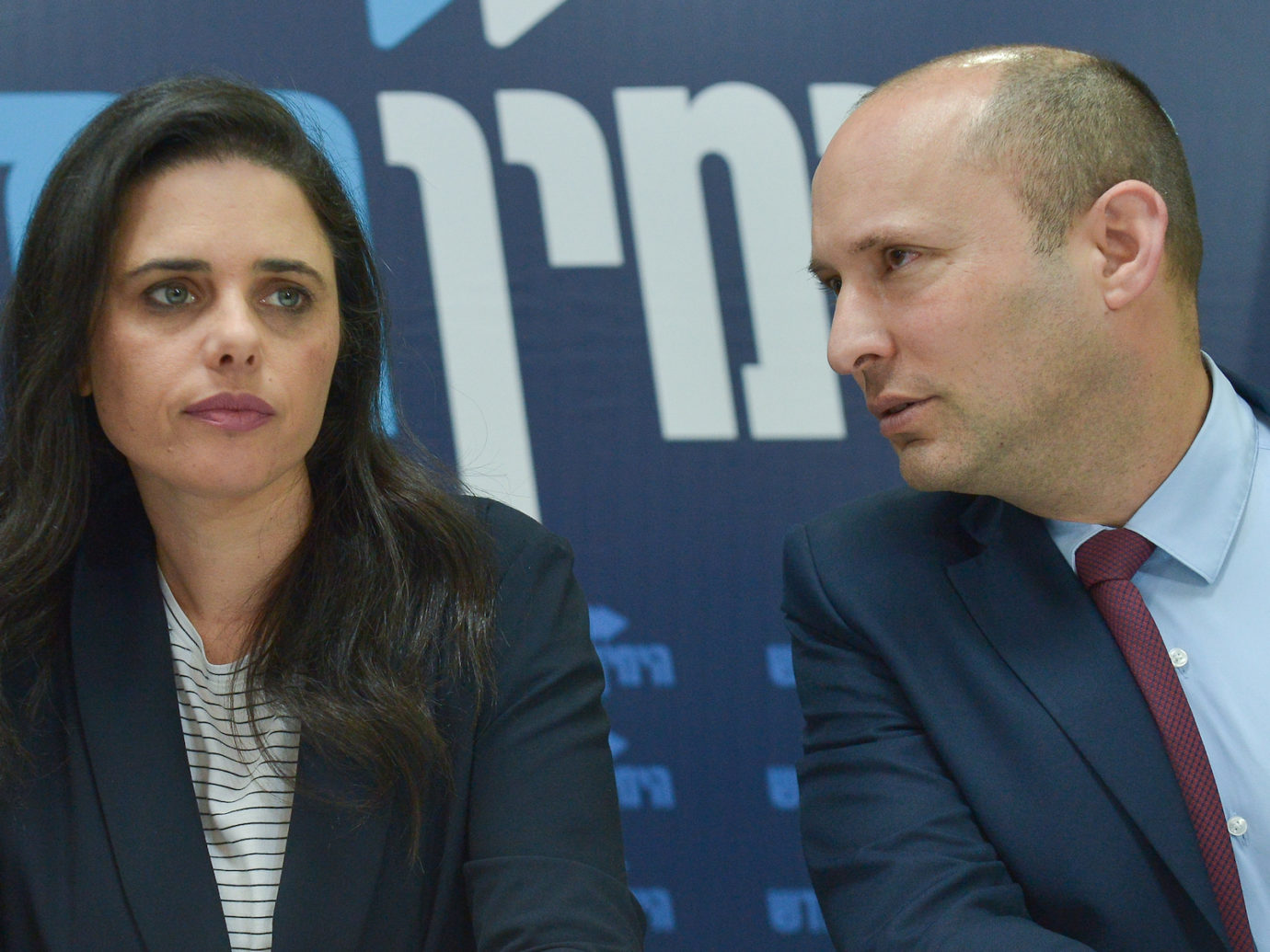 Israeli Education Minister Naftali Bennett (R), Justice Minister Ayelet Shaked (L), hold a press confrence of the New Right Political party, in Tel Aviv on March 17, 2019. Photo by Flash90
Israeli Education Minister Naftali Bennett (R), Justice Minister Ayelet Shaked (L), hold a press confrence of the New Right Political party, in Tel Aviv on March 17, 2019. Photo by Flash90 We call this format a Timesaver Guide to Israel’s Coming Elections. This will be a usual feature on Rosner’s Domain until next Election Day, September 17. We hope to make it short, factual, devoid of election hype, and of he-said-she-said no news, unimportant inside baseball gossip.
Bottom Line
We finally have final lists.
Main Political News
Registration is now closed. The parties will no longer split, merge, recruit.
The main parties are: Likud, Blue and White, The United Arab Party, Israel Beiteinu, The Democratic Camp, The United Right, Labor, United Torah Judaism, Shas. For now, these are the only parties that seem to be able to cross the electoral threshold.
On the right, there is still a split. Zehut (Moshe Feiglin’s libertarian party) Otzma (ultra nationalist) and Noam (a national haredi party) will run independently.
On the left, Labor leader Amir Peretz withstood the pressure to merge with the Democratic Camp. Labor will focus on social agenda.
Developments to Watch
Campaign: The real campaign begins only now. Until yesterday, parties were fighting to sustain themselves and/or prove their values as they seek mergers. Next week, it is finally about the voters.
Left: The big question for the left is: Will the Labor party make it pass the threshold and into the Knesset. If not, many votes could be lost.
Right: A similar question: How many voters will insist on voting for parties with little chance of getting in.
Coalition: From now until election day, everything the politicians are saying about their post-election preferences ought to be taken with more than a grain of salt. The numbers will dictate their ultimate preferences.
Participation: Will voters participate? Will they come on Election Day? This could make or break a close election. Especially interesting is the question of Arab participation. Back in April, half of Israel’s Arab voters did not come to the polls. They now have a united party to vote for. So – will they vote?
The Blocs and Their Meaning
This might sound disappointing, or boring, but the blocs situation does not change. It did not change when a new party on the left (The Democratic Camp) formed. It does not change, at least not yet, when a new party on the right forms (the United Right).
If you look at the 2 graphs below, you’ll see that they both tell the same story: The blocs’ composition is stable. Netanyahu has no path to a right-religious coalition, unless he convinces Lieberman to join in. Gantz has no easy path to any coalition, except unity government with Likud.


A Party to Watch
How is Lieberman doing? Here is proof that he keeps getting stronger. To show this we present four average: of the last 20 polls, the last 10, the last 5, and the last 3. As you can see, the more recent polls show his growing strength. So, Lieberman is not yet done inching up.
























 More news and opinions than at a Shabbat dinner, right in your inbox.
More news and opinions than at a Shabbat dinner, right in your inbox.